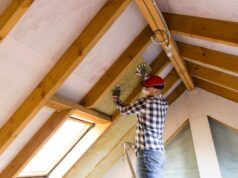
When planning a renovation or new build in Australia, window compliance is often overlooked, but it shouldn’t be. With updated requirements in the 2022 and 2025 editions of the National Construction Code (NCC), and growing focus on energy efficiency, insulation and bushfire safety, it’s crucial to ensure every window in your home meets current Australian standards.
Whether you’re replacing a single sash or designing an entire new façade, here’s how to make sure your windows comply in 2025.
National standards all windows must meet
At a minimum, all windows and external glazed doors installed in Australian homes must comply with AS 2047, the mandatory Australian Standard that covers structural performance, water penetration resistance, air infiltration, and durability.
To demonstrate compliance, manufacturers must:
- Have their products independently tested by a NATA-accredited lab.
- Apply a performance label showing wind and water ratings (measured in Pascals).
- Supply certification and documentation verifying compliance with AS 2047, AS 1288 (glass selection), and other site-specific standards like AS 4055 (wind loading) or AS 3959 (bushfire-prone areas).
These labels aren’t just red tape—they show whether your windows are built to withstand local conditions, including high winds, heavy rain or extreme fire risk.
The rise of energy ratings and the 7-star minimum
From May 2025, all new homes across Australia must meet a minimum 7-star NatHERS energy efficiency rating, as part of the NCC 2022 Amendment 1 rollout. This is a step up from the long-standing 6-star requirement, and it places increased pressure on window performance.
To meet these standards, windows need to be rated under the WERS (Window Energy Rating Scheme), which assesses:
- U-value (how well the window insulates against heat transfer)
- Solar Heat Gain Coefficient (SHGC) (how much solar radiation passes through)
For home owners, this means:
- Double-glazing is fast becoming a minimum expectation.
- Thermally broken frames (especially aluminium) help reduce heat transfer and condensation.
- Poorly rated windows can drag down your overall house rating and make it harder to get approval for a build or major renovation.
New focus on whole-of-home energy performance
The updated NCC now requires a whole-of-home energy assessment, meaning windows can no longer be viewed in isolation. Their performance contributes to the total energy use of heating, cooling, hot water, lighting and other appliances.
In practice, this means:
- Renovators upgrading windows may need to coordinate with insulation, roof colour and shading devices to meet energy goals.
- Poorly performing windows in extensions or retrofits may trigger the need for compensating upgrades elsewhere in the house.
What about condensation and waterproofing?
Condensation inside homes, especially in cooler climates, is now a major compliance concern. As homes become more airtight for energy efficiency, moisture has fewer escape routes, and poorly sealed windows can quickly become mould and mildew hotspots.
The NCC 2022 and 2025 updates require:
- Improved condensation management around windows, especially in wet areas and southern zones.
- Correct installation with sarking, flashing and drainage pathways to prevent water ingress and rot.
- Builders and installers must follow strict detailing procedures to meet waterproofing requirements.
If you’re replacing or relocating windows, ensure your builder or installer is across the latest NCC condensation and water management requirements.
Bushfire zones, cyclone areas and site-specific requirements
Many parts of Australia fall under Bushfire Attack Level (BAL) ratings, which determine what materials and construction methods are needed to withstand ember attacks, heat flux and direct flame.
If you live in a BAL-rated area, your windows must:
- Be BAL-compliant as per AS 3959.
- Feature toughened glass, metal mesh screens or double glazing (depending on the BAL level).
- Be installed with ember seals and non-combustible framing.
In cyclonic or high-wind zones (particularly in northern QLD and coastal regions), windows must also:
- Comply with AS 4055 (wind classification).
- Have appropriate strength ratings for uplift and impact resistance.
Compliance documentation: What to ask for
When purchasing windows or booking an installer, ensure you receive:
- A copy of the AS 2047 compliance certificate.
- WERS energy ratings for all window types.
- Any relevant BAL or wind load certifications.
- A clear installation manual showing correct flashing, sealing and drainage methods.
- For new builds or renovations requiring council approval, evidence of window performance for your energy report or NatHERS certificate.
Failure to provide these could delay inspections or even invalidate your occupancy certificate.
Considerations for renovators
If you’re updating an existing home:
- Heritage overlays or planning controls may limit the type or size of windows you can install.
- Check with your local council before replacing windows that change the exterior look or size.
- In NSW, BASIX requirements still apply to many renovations and extensions. Windows will be assessed under those energy rules as well.
Retrofitting double glazing or secondary glazing (adding a second pane inside existing windows) can provide massive comfort and energy gains, even without major construction.
Final thoughts
Modern windows are more than just panes of glass. They must be tough, airtight, weatherproof, bushfire-resistant and energy-efficient. With higher compliance standards in place in 2025, it’s essential for home owners and renovators to plan ahead, choose reputable suppliers and demand the right documentation.
If you’re unsure whether your windows comply, speak to a licensed builder, building surveyor or window manufacturer who understands the full suite of updated NCC requirements.





